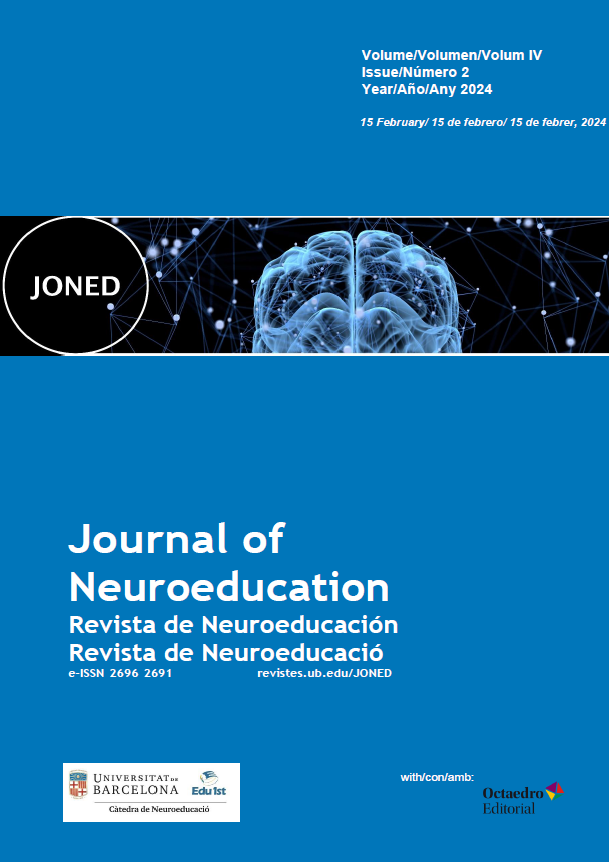Correlaciones electrofisiológicas (EEG) de los efectos de recompensa en la percepción sensorial temprana en humanos
DOI:
https://doi.org/10.1344/joned.v4i2.43569Resumen
Existing research suggests that reward system and sensory perception networks function in concert and that activation in one may influence the other; however, the dynamics of these influences remains poorly understood. There is general agreement regarding the existence of an interaction between bottom-up and top-down signals in perception and attentional processing. While it’s not absolutely sure what stages of perception are influenced by cognition, it has been assumed that cognitive input influences later categorization stages of visual processing, and that earlier stages are solely involved in the pure bottom up extraction of basic features of sensory signals. Several recent experiments have challenged this idea by showing that top-down modulation by cognition may extend to early visual stages of perception. Recent Electrophysiological studies have begun to probe the neural correlates of the interaction between attention/reward, perception and cognitive control in humans. . We posit that selection of the value of our choices and actions from multiple alternatives may cause suppression of the sensory representations of unselected, low value stimuli while the selected, high value stimuli are enhanced. The present project has been proposed to study the dynamics of this selective process where effects of various reward categories on attention and early sensory perception are tracked using behavioral and electrophysiological (EEG) techniques. Methods from neuroscience, signal processing, psychophysics and EEG tools will be used in the project.
Descargas
Publicado
Número
Sección
Licencia
Derechos de autor 2024 Kundan Lal Verma

Esta obra está bajo una licencia internacional Creative Commons Atribución-NoComercial 4.0.
Los autores que publican en esta revista aceptan los siguientes términos:
a. Los autores conservan los derechos de autor y otorgan a la revista el derecho de la primera publicación.
b. Los textos se publicarán bajo una Licencia de Atribución No Comercial Creative Commons que permite a otros compartir el trabajo, siempre que incluyan un reconocimiento de la autoría del trabajo, su publicación inicial en esta revista y los términos de la licencia, y no se haga un uso comercial.



